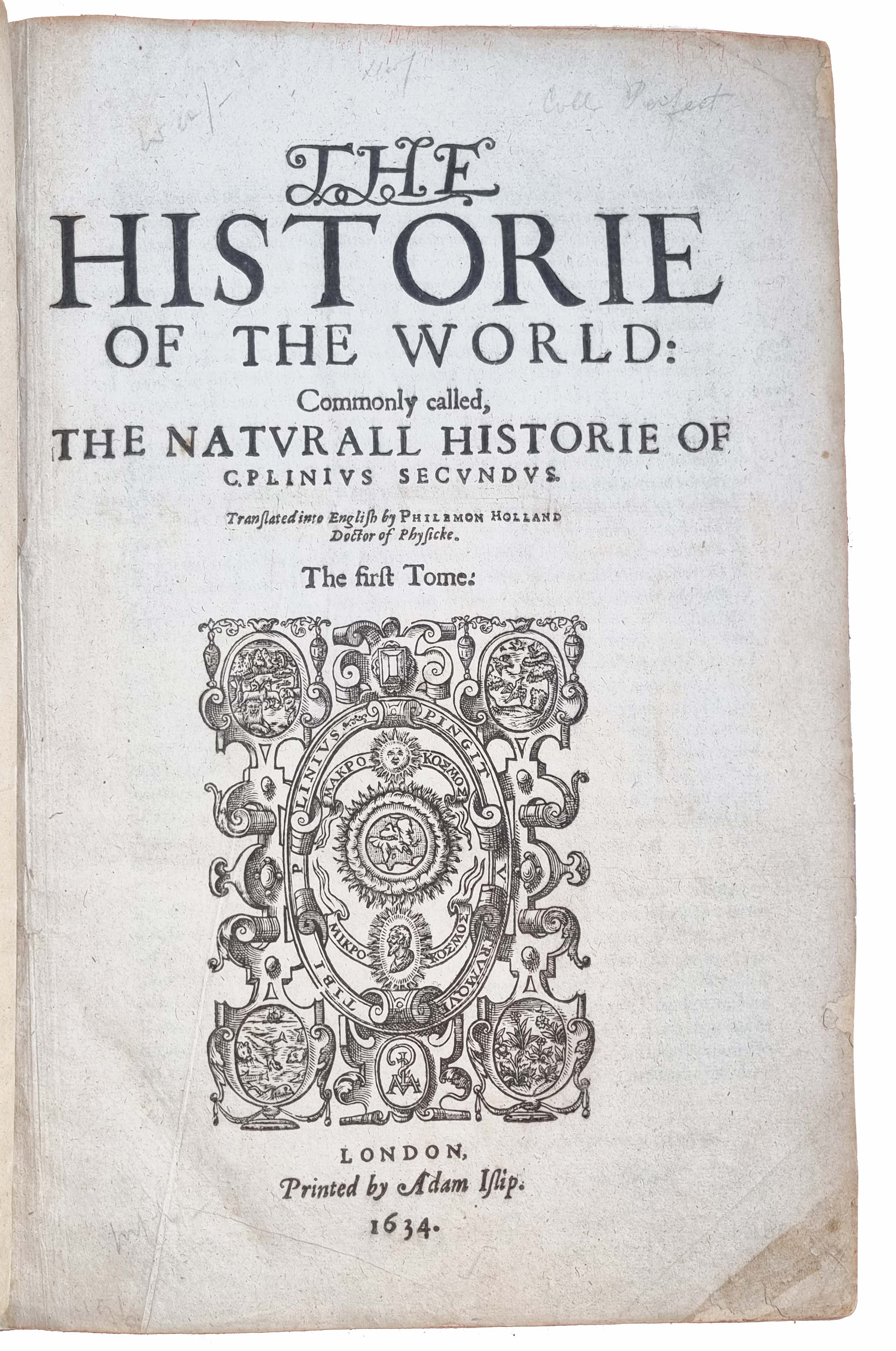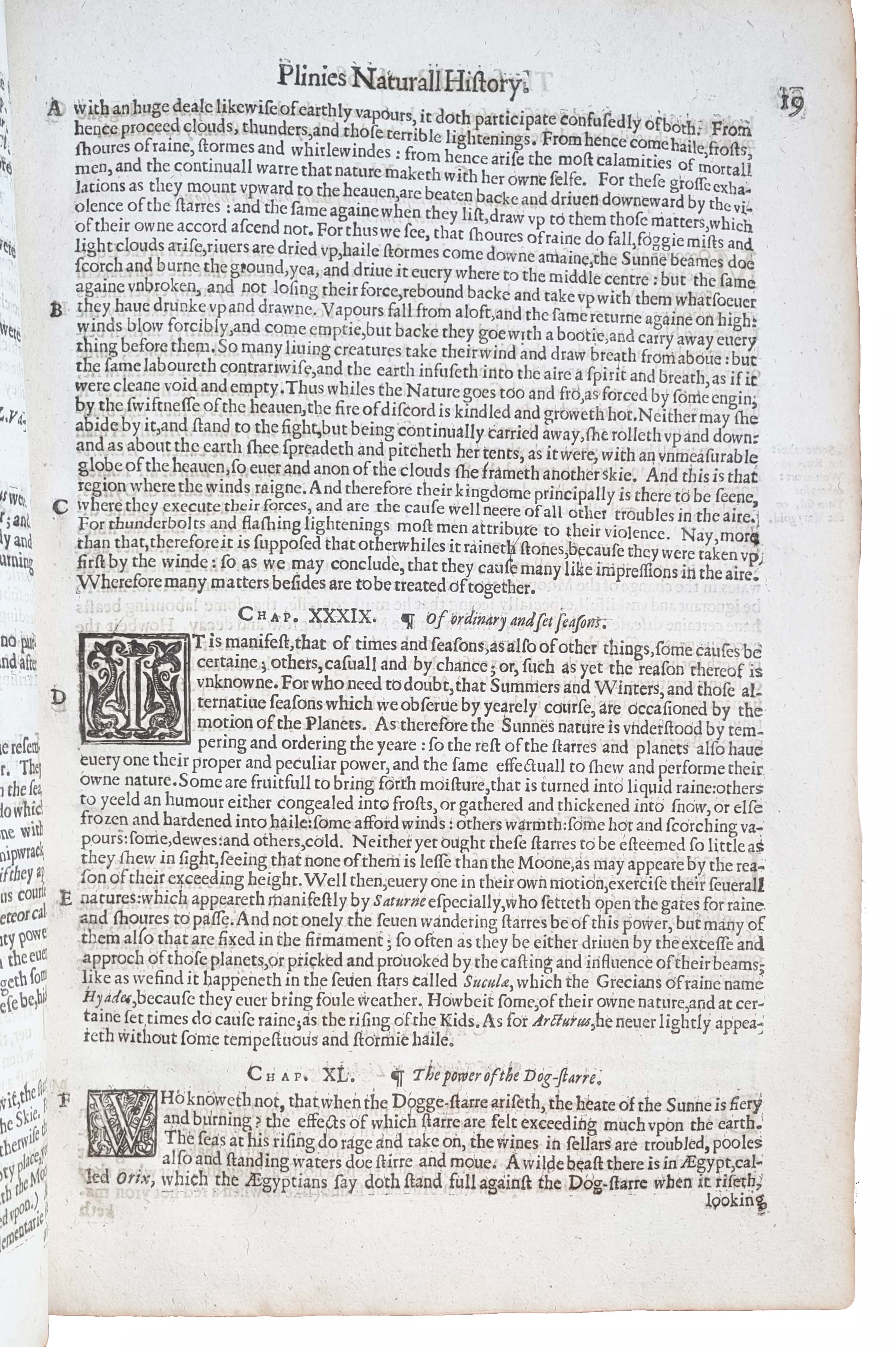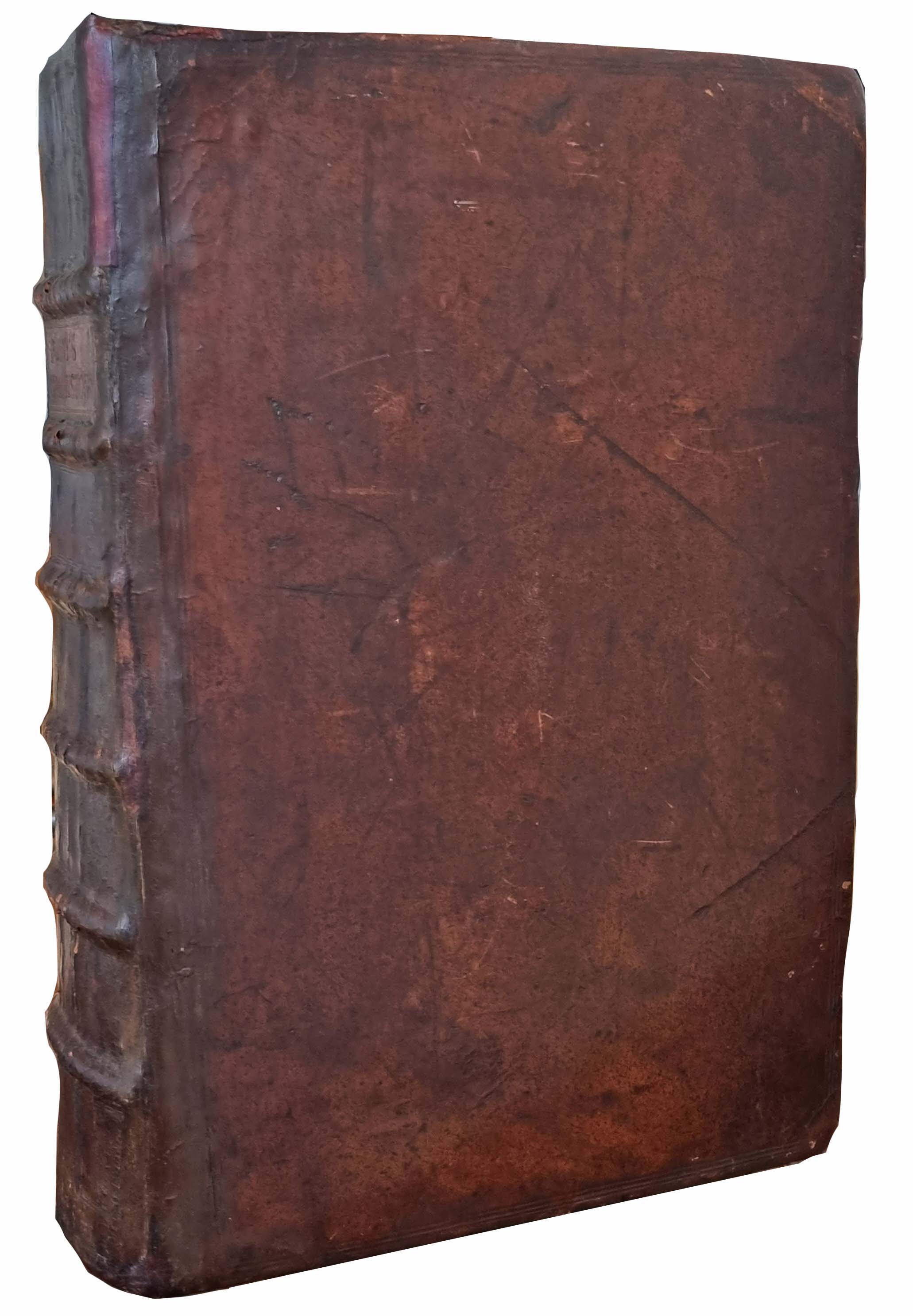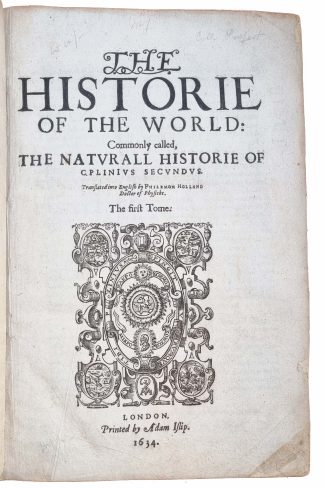PLINY
The Historie of the World: Commonly called The Naturall Historie.
London, Adam Islip, 1634£9,500.00
Folio. 2 vols in 1. (lxiii) 614 (xl); (xii) 632 (lxxxvi). Roman letter. Woodcut to both tps with illustrative depictions of the contents of the work with globe and portrait of Pliny, ornamental and figurative head and tail pieces and initials. Stamp of Lawes Agricultural Trust to pastedowns, modern ms to blank verso of last with notes on phrases from text, end papers with list of ‘obsolete & unusual words in this book’ in same hand. Light age yellowing, a few leaves browned, first tp paper thin with some marginal tears one outer margin frayed. Small marginal worm holes to upper outer edge of pp. 63-110 of second work, light foxing to some leaves. A good, clean copy with good margins in contemporary calf, rebacked, old spine remounted, a few minor scratches to covers, cracking to spine, title gilt to spine, aer.
Handsome second edition of Philemon Holland’s immensely popular English translation of Pliny’s Natural History. Pliny the Elder (23-79AD) was an administrator for Emperor Vespasian and a prolific author. The ‘Historia’ is a masterful encyclopaedia of theoretical and applied natural sciences detailing all that was known in these fields in the first century AD. Based on hundreds of Greek and Latin sources, its ten books introduce the reader to astronomical questions like the nature of the moon and its distance from the earth; pharmacopoeia, ointments and herbal remedies; natural phenomena including rains of stones; world geography and the ethnographic study of remote ‘gentes mirabiles’; ‘extraordinary peoples’, descriptions of all animal and tree species, wild and domesticated; horticulture from cultivation to the treatment of plant mutations and illnesses; metals and gold mining; mineralogy and pigments for painting.
Philemon Holland was an English schoolmaster and one of the most famed Elizabethan translators of the classics. He brought the works of Livy, Suetonius and Plutarch as well as Pliny the Elder to a wider, English speaking audience. The present was first published in 1601 and was dedicated to Sir Robert Cecil, the prominent statesman and favourite of Elizabeth I. The most popular of Holland’s translations, it was published again in this 1634 edition. Prior to Holland’s translation, it had never been printed in English, and would not be again for another 250 years. Indeed, even after four centuries, “Holland is still the only translator of this work to attempt to evoke its literary richness and beauty” (ODNB).
“The importance of Pliny lay not so much that he was an inexhaustible source for monsters, eclipses, and the stranger habits of all created things, but that in the pages of Philemon Holland’s translation Shakespeare found that emphasis on Nature which he employed and re-interpreted in the tragedy” (Evans, The Language of Shakespeare’s Plays).
“Over and over again it will be found that the source of some ancient piece of wisdom is Pliny.” (Printing and the Mind of Man, 5).
ESTC S121936; Pforzheimer 496 (1st Ed.); Lowndes V 1885.In stock





